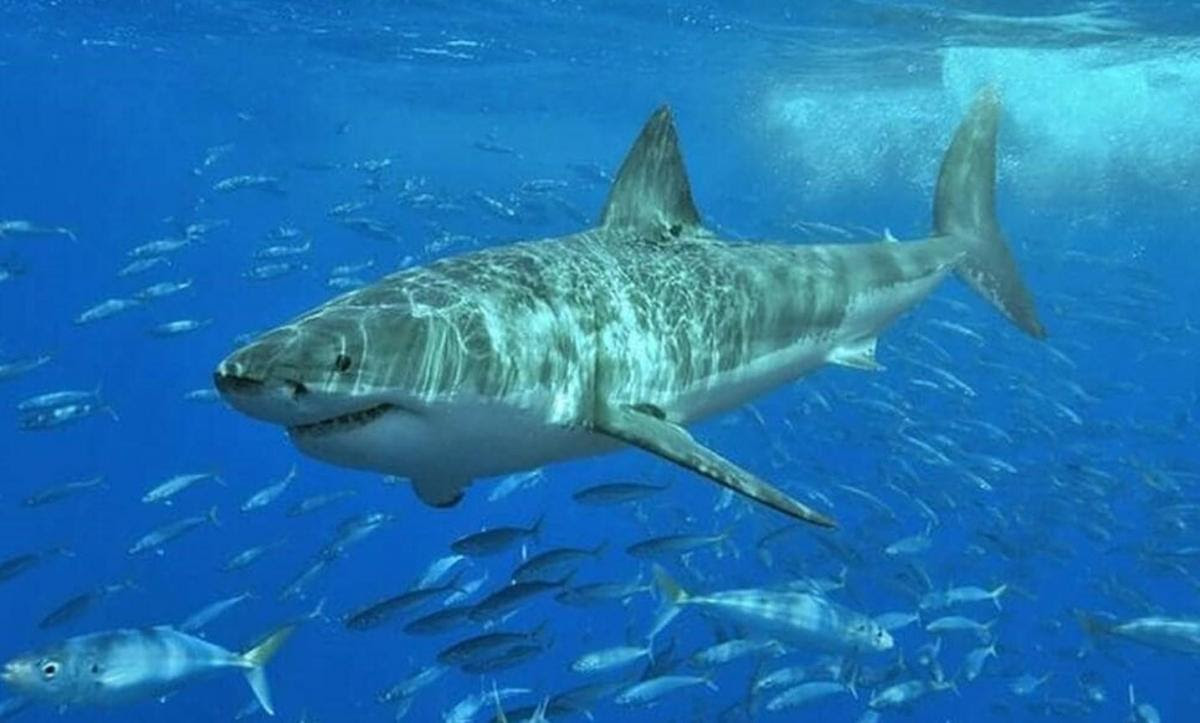For years, during the summer months, sharks have been making their way up the Atlantic coast of the United States, towards New England. The peak of the season occurs between August and October.
In Cape Cod, Massachusetts, the main character of “Jaws” has become a tourist attraction, adorning caps and t-shirts. But some beaches have already been temporarily closed this year due to the animal’s presence.
More than 300 great white sharks have been tagged over the years, and a dozen of them are already present in the area, according to Gregory Skomal, a shark biologist for the state of Massachusetts. He estimates that more than 100 great white sharks may pass through these waters yearly.
Regulations were established in the Atlantic starting in the 1990s to protect them from fishing.
“There is a general increase in the population, which we think is a rebound after (…) very high levels of overexploitation,” he tells AFP, although it remains difficult to estimate their numbers accurately.
In addition, white sharks tend to swim closer and closer to the coast to hunt one of their favourite prey: seals. They, too, have been protected, and their numbers are growing.
The result: more sharks venturing closer to swimming areas.
“Shark attacks are sporadic, but in the last ten years, we’ve seen more,” says Gregory Skomal.
In New York State, the governor has just announced additional surveillance patrols, including drones or helicopters.
On the tourist beaches of Long Island, several shark bites have already been reported by the press – the white shark is not necessarily responsible, as several other species are present in the area, including tiger sharks and bull sharks.
This number of attacks is unusual, after three years without any.
According to Gavin Naylor, director of a shark research program at the University of Florida, this finding is linked to the increased presence of certain fish attracting the predators, possibly due to warm currents this year.
But suppose locally, things can vary significantly from one year to another. In that case, globally, about 75 shark attacks are still recorded each year – after a drop to about 60 during the two years of the pandemic. The number of deaths is around five.
In the last 20 years, there have only been two deaths north of Delaware in the United States, on Cape Cod in 2018 and Maine in 2020.
But in the future, it’s reasonable to expect the number of fatalities to increase. “There are more white sharks, so the likelihood will increase (…) There will be more bites,” Gavin Naylor summarized.
For the moment, the available variations observed are not statistically significant, according to him.
Surfers ventured further into the water and accounted for half of the unprovoked attacks in 2021.
Further south, Florida, with its many tourist beaches and tropical climate, still accounts for 60% of U.S. attacks – and nearly 40% of global attacks.
Sharks are far from being the bloodthirsty beasts sometimes portrayed in movies.
Studies have shown that they can mistake surfers or swimmers for their usual prey – especially white sharks, which have a rather poor view.
“With so many people in the water around the world, if sharks preferred to feed on human prey, we would have tens of thousands of attacks yearly,” says Gregory Skomal.
With climate change, the expert expects rising ocean temperatures to gradually lengthen the season in which sharks are present in the northern United States.
So what can be done to limit the risks?
An app exists for anyone to report a shark sighting.
In the water, “look around,” advises Nick Whitney, a scientist at the New England Aquarium. If many birds chase fish, “that probably means sharks are feeding on them as well.”
And if bitten, the real danger is bleeding to death, so it’s essential to get to shore and control the bleeding until help arrives.



Comment here